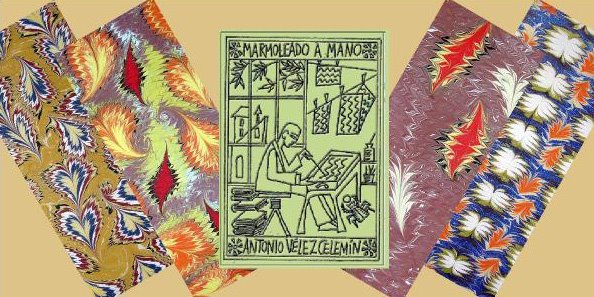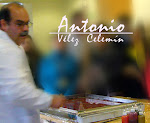...................................................
 Central courtyard of the Barracks of the Count - Duke and the entry of the Historical Library.
Central courtyard of the Barracks of the Count - Duke and the entry of the Historical Library.
Felipe V ordered the construction of an enormous building that was during long time the barracks of the Royal Guard and a Military Academy. In 1869 a fire destroyed it, and although the town hall of Madrid acquired it in 1969, it was only possible to begin the restoration works in 1983. The Barracks of the Count - Duke, one of the biggest buildings of Madrid, turned then in Cultural center. What people living in Madrid have not been present at any event of the famous “summers of the town”? But also, here there are the Municipal Archives, the Newspaper and periodicals library, the Historical Library, the Musical one, there are several exhibition halls … and here there is installed the Handmade Printing of the Town hall of Madrid, heiress of the ancient Printing and Municipal Lithography, established already in the XIXth century.
 North courtyard, the Printing occupies the second floor of the building.
North courtyard, the Printing occupies the second floor of the building.
The targets of the Handmade Printing are centered on the spread and maintenance of the traditional techniques of production of the book, and in this sense they print at least an annual volume for his poetry collection, using machines of the beginning of the XXth century, and bind and restore books attending the needs of the Town hall. Always with traditional, handmade skills, which this way stay alive in this enclosure.
One good day José Bonifacio Bermejo, manager of the Printing, telephoned me to say if I could be in charge of a marbling course for the internal formation of the personnel of the Printing. I resisted as much as I could, approximately fifteen seconds, before saying to him yes. Although in minor scale, my targets are the same that those of the Printing: to spread and to maintain the technique of marbling.
I could organize the course as I wanted, so I strained to combine a few theoretical chats, a little bit at the beginning of every day, as I did not want to overwhelm anybody with scientific treatises, with the practice of marbling, which was occupying us the rest of every morning. This way, from Monday until Friday, in two groups, from May 25 until June 5, with eighteen participants in total, bookbinders and restorers.
The chats livened up with presentations of slides and a projector that worked according to his desires, were focused to illustrate some aspects of marbling that would be impossible to develop practically: the knowledge of the oldest exemplars and more ancient manuals, the oriental techniques and the modern applications of marbling in the artistic field and on other supports different from the traditional paper. Another point in which was necessary to insist was that the classic techniques of paper decoration that has been used in bookbinding are different, each one with its own identity: under the generic name of “endleaves papers” it fits everything, being the same if it is an industrial paper of the actuality or if it is a handmade one of the XVIIIth century, being the same if it is marbled or a xylographic engraving. It seems very important to me that the differences between them would be known and that it would be possible to begin naming each one individually and not with these generic names like the mentioned earlier or as “fantasy paper”, just "painted", or even “colored” or as so many other appellatives between which I prefer, certainly, the modest one of “nice papers”.
 A decorated paper by xylographic means, French, of clear inspiration in the "Indians" cloths...
A decorated paper by xylographic means, French, of clear inspiration in the "Indians" cloths... ...that was printed with a simple printing table, with the plate over the paper, according to the method developed in France and that would allow the printing of the valued papers named "panoramic", some of them with thousands of plates and colors.
...that was printed with a simple printing table, with the plate over the paper, according to the method developed in France and that would allow the printing of the valued papers named "panoramic", some of them with thousands of plates and colors. The sprinkled, the marbled and the paste papers were born and developed in the classic bookbinding workshops. And the last two techniques have today an important artistic slope, in addition to being requested by lovers of the traditional binding and some restorers. On the other hand the xylographic papers, the flock ones, those of metallic varnish, and the brocades were created by engravers, descendants of the ancient ambulant engraving sellers who were selling his protective images printing them only with the force of his hands. When printing was born they couldn’t use it, so they designed some ingenious means to be able to keep on using his plates of wood or metal. Today most papers are decorated industrially and these handmade skills have disappeared practically.
 A German brocade paper with figures of animals engraved on a metallic plate...
A German brocade paper with figures of animals engraved on a metallic plate... ...which needed the employment of a cylinder press to exercise uniformly enough pressure to print the gilding on the paper and to produce a brocade relief.
...which needed the employment of a cylinder press to exercise uniformly enough pressure to print the gilding on the paper and to produce a brocade relief. And, what to say about the principal activity of the course? I did not count the papers that we paint. On the first Wednesday we had worn out the forecast of papers of the first group and it was necessary to ask for more.
It does not take a lot of time to explain the relations between the bath, the paintings and the ox gall, and when the love of the teacher towards his technique is shared by his pupils, everything goes in the air.
 Mamen and Ana concentrated on her work.
Mamen and Ana concentrated on her work.Every day it was necessary to explain new effects, new models and new variants. The application of all the participants was enormous, only comparably to his anxiety for knowledge.
On Fridays we made the final exercise, the marbling of the edges of an exquisite edition of the “Quijote” in two volumes, of course from the Handmade Printing, and the marbling of its four endleaves.
 Pablo marbling the edges of his ”Quijote”...
Pablo marbling the edges of his ”Quijote”... ...here, on top of the size, it is possible to notice the enormous regularity with which he was doing the difficult model he has chosen...
...here, on top of the size, it is possible to notice the enormous regularity with which he was doing the difficult model he has chosen... ...and here the final result. His face of satisfaction does not surprise me at all.
...and here the final result. His face of satisfaction does not surprise me at all.The Handmade Printing of the Town hall of Madrid undoubtedly will help in the future to keep alive the flame of the Spanish marbling, well-known and respected in the entire world from the XVIIIth century, when such a famous model precisely named “Spanish” was invented here.
I want to express my gratitude to José Bonifacio Bermejo and to Eugenio Cano for trusting in me for the achievement of this course and to Acisclo, Agustín, Alicia, Ana, Ángel, Fran, Inmaculada, Jose, Jose Luis, Lidia, Mamen, Mari Carmen, María José, Mercedes, Miguel Ángel, Pablo, Paco y Rosa for their interest on marbling and for the affection with which they surrounded me. At the end I managed to learn your names!








































